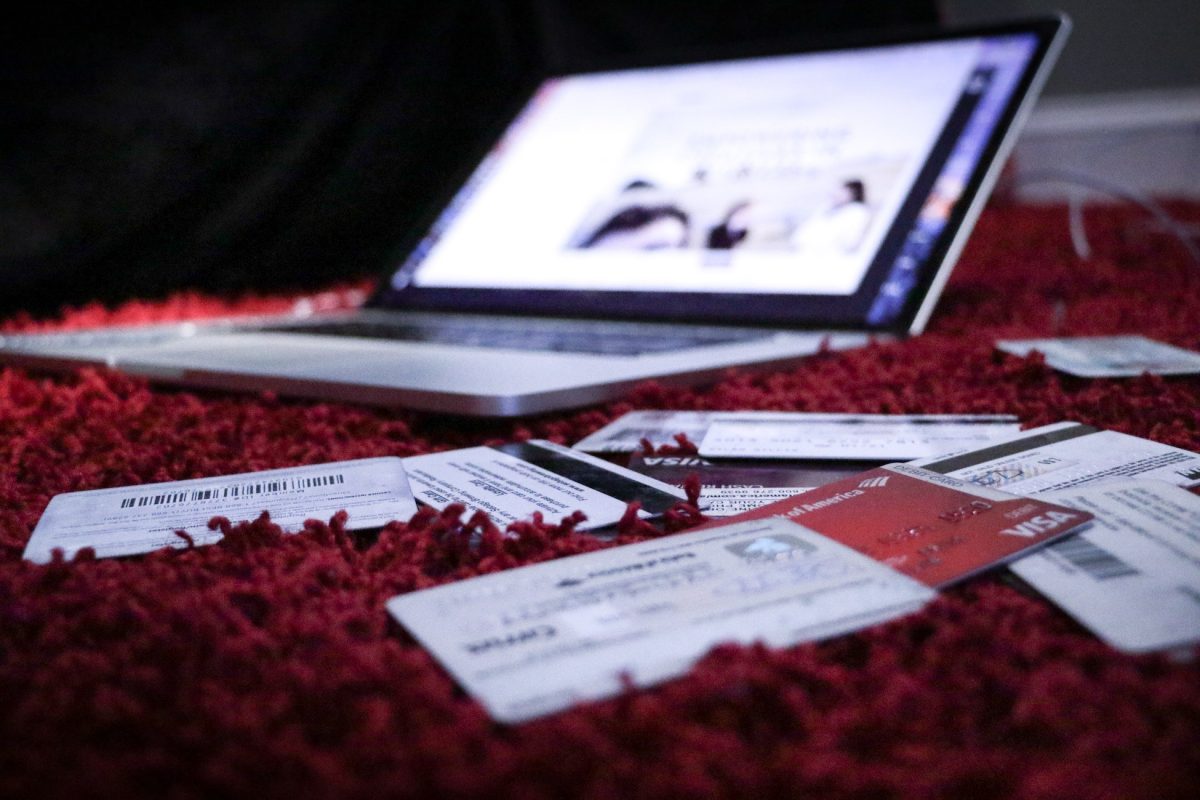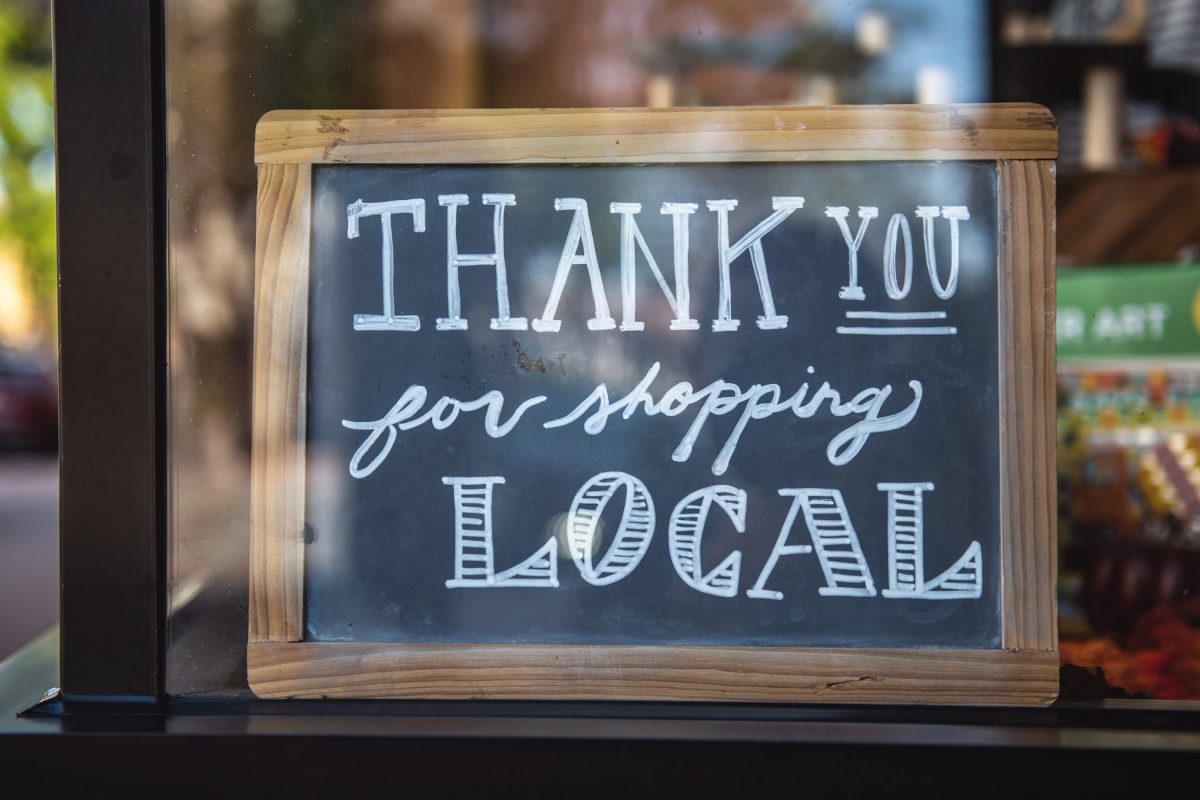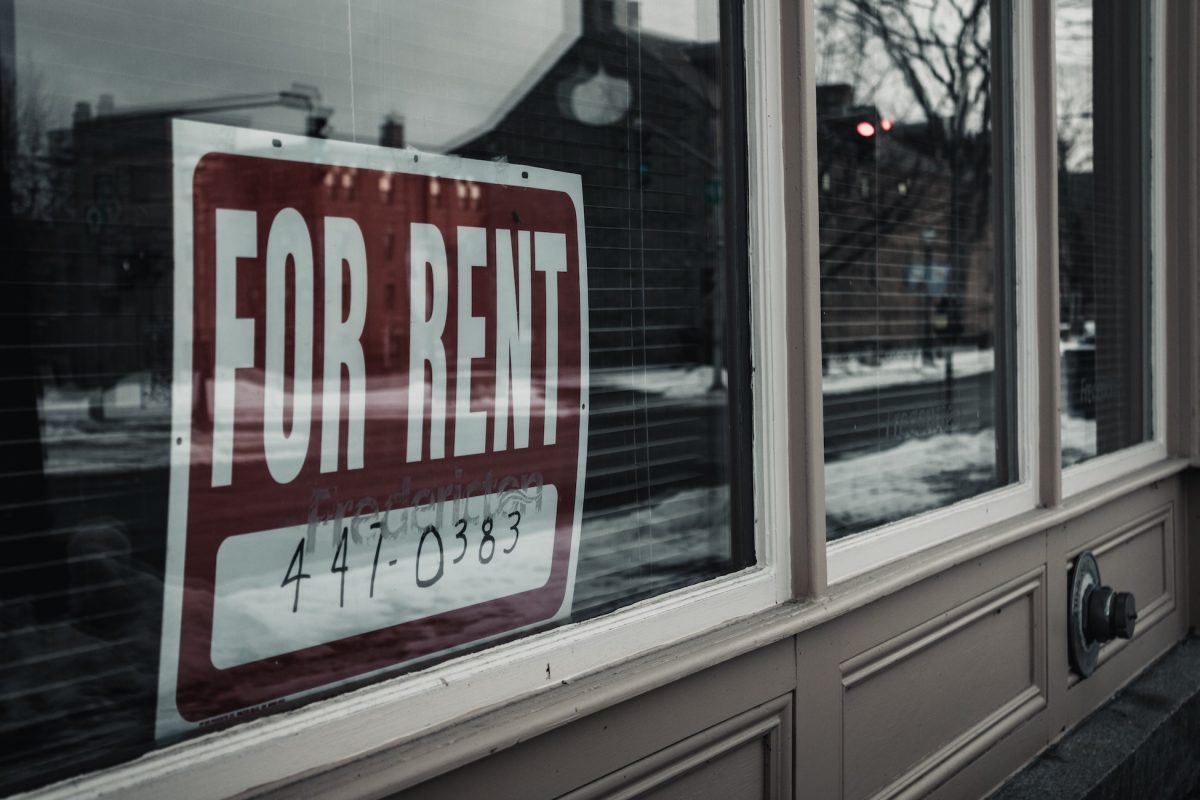Ever wondered what the buzz is about when people mention “forgivable loans” while discussing their financial freedom? Imagine a loan that you might not have to repay as long as you meet certain requirements—yes, that sounds almost magical, right? In this deep dive into forgivable loans, we’re going to break down everything you need to know about this intriguing financial tool. We’ll unpack the mechanics, the eligibility criteria, pros and cons, and even how to navigate the application process in a language that’s refreshingly down-to-earth and peppered with humor to keep things interesting for millennials, Gen Z, and anyone who’s ever battled with the complexities of financial well-being.
What is a Forgivable Loan Table of Contents
So, What Exactly Is a Forgivable Loan?
The Mechanics Behind Forgivable Loans: How Do They Work?
The Origins and Evolution of Forgivable Loans
Forgivable Loans vs. Traditional Loans: What’s the Difference?
Who Can Benefit from Forgivable Loans?
The Perks and Pitfalls of Forgivable Loans
Common Types of Forgivable Loans
Navigating the Application Process: Tips and Tricks
Understanding the Fine Print: Conditions and Performance Metrics
Managing Expectations: What If You Don’t Meet the Criteria?
Real-Life Stories: Forgivable Loans in Action
Resources and Community Support: Your Next Steps
Future Trends: The Evolving Landscape of Forgivable Loans
Strategies for Success: Maximizing the Benefits of Your Forgivable Loan
Forgivable Loans and Your Financial Future
So, What Exactly Is a Forgivable Loan?
Let’s kick things off by defining the star of our show: the forgivable loan. At its core, a forgivable loan is a type of financial aid that, under specific conditions, doesn’t have to be repaid. It’s like winning a mini lottery triggered by meeting certain milestones. These loans are typically provided by government programs, educational institutions, or even private lenders aiming to promote specific behaviors or services, such as working in underserved areas or investing in renewable energy.
Unlike traditional loans, where repayment is as guaranteed as your morning coffee habit, forgivable loans come with the twist that if you adhere to particular criteria—for example, staying employed in a designated field for a set number of years—your debt can vanish into thin air. Sounds dreamy, right? However, as with most things that seem too good to be true, the details matter. There are conditions, time limits, and sometimes even performance metrics that you need to meet before your loan is wiped clean.
Essentially, think of a forgivable loan as a financial incentive plan. It’s designed to help you kickstart your journey by easing the burden of lump-sum repayments, provided you’re willing to fulfill the terms attached. Whether you’re a recent graduate eyeing a public service career or a young professional considering the costs of starting a business, forging your path might just include this unexpected financial boost.
The Mechanics Behind Forgivable Loans: How Do They Work?
At first glance, the notion of a loan you might never pay back can sound like an overly generous gift—almost like discovering there’s an extra fry at the bottom of your fast-food bag. But as with any financial product, there’s some fine print involved. Forgivable loans come with specific conditions that must be met for the forgiveness to kick in. These conditions usually include:
- Service Requirements: You might need to work in a particular field, region, or for a set period. For example, some student loan forgiveness programs require you to teach in underprivileged schools or work in rural healthcare facilities.
- Performance Benchmarks: For business or innovative projects, you might have targets to hit, such as maintaining profitability, creating jobs, or meeting environmental goals.
- Time Commitments: There is often a time horizon over which you must demonstrate your commitment. This could range from a few years to a decade, depending on the nature of the loan.
Picture this: you’re given a golden ticket in the form of a forgivable loan. However, before you can claim your winnings, you’re asked to complete a series of challenges—sort of like a financial version of a video game. Beat these challenges, and boom, your loan balance evaporates. Fail to meet them, and you might be staring at a traditional repayment schedule that could feel like a relentless boss battle.
The catch is ensuring you understand and leverage all the fine details of the forgiveness terms. This might involve navigating bureaucratic hoops or meticulously tracking your progress over the required term. It may seem daunting at first, but many programs offer support resources and counseling to help you stay on track.
The Origins and Evolution of Forgivable Loans
To truly appreciate forgivable loans, it helps to know a little about where they come from. While the idea might sound modern and innovative, it actually isn’t entirely new. Forgiveness-based financing has roots in policy initiatives aimed at boosting economic development, incentivizing public service, and addressing workforce shortages in critical sectors.
In the past, many forgivable loan programs emerged as part of government efforts to stimulate underdeveloped regions or ensure that essential public services were adequately staffed. For instance, some programs were designed to lure talented individuals into rural areas or underserved urban communities by wiping out their debts in exchange for a few years of dedicated service.
Over time, the concept has evolved. Today, a variety of sectors—including higher education, healthcare, renewable energy, and even tech startups—offer versions of forgivable loans to encourage investment in socially beneficial ventures. These modern iterations cater especially to millennials and Gen Zers, who are known for seeking careers and business opportunities that align with their values and aspirations.
As the economy shifts and new challenges emerge, forgivable loans have adapted to help bridge the gap between risk and innovation. They’re not just about financial relief; they’re a strategic tool used to drive positive change and foster resilience in communities and industries that need it most.
Forgivable Loans vs. Traditional Loans: What’s the Difference?
Let’s compare: on one side, we have traditional loans that require a rigid repayment schedule, interest accruals, and sometimes even prepayment penalties. On the other, forgivable loans offer a unique blend of financial assistance and performance incentives. Here’s a breakdown:
- Repayment Flexibility: Traditional loans demand repayment regardless of your situation, while forgivable loans can disappear if you meet certain criteria.
- Interest and Fees: Regular loans accumulate interest, which can turn a small amount into a major mouthful over time. Forgivable loans often come with reduced or no interest rates during the grace period, depending on the program.
- Risk vs. Reward: With forgivable loans, the challenge is to meet the required benchmarks. If you fail, your loan may revert to a standard loan, which might include penalties. With traditional loans, you know exactly what you owe from day one.
- Purpose-Driven: Forgivable loans are frequently tied to goals like community service, innovation, or sustainability. They’re less about generating profit for a bank and more about helping you achieve broader social impact or personal development objectives.
In essence, the decision between a forgivable and a traditional loan boils down to your personal goals and capacity for meeting the required terms. If you’re excited by the idea of actively working toward not only repaying your debt but erasing it altogether through meaningful work or innovation, a forgivable loan might just be your new best friend.
Who Can Benefit from Forgivable Loans?
Forgivable loans are not a one-size-fits-all financial product. They’re designed to target specific groups and initiatives. Here are some common beneficiaries:
- Recent Graduates: Many educational institutions provide forgivable loans to graduates who commit to careers in public service, teaching, or healthcare in underserved areas. This not only helps you kickstart your career but also serves the greater good.
- Entrepreneurs and Startups: Certain innovative loan programs are geared toward startups that promise social, environmental, or technological advances. These loans can provide critical funding with the bonus of forgiveness if key milestones are achieved.
- Community Leaders: If you’re planning to launch a project aimed at community development or environmental sustainability, you might find forgivable loans that support such civic-minded initiatives.
- Nonprofit Organizations: Some programs are designed to help nonprofits expand or improve their operations, with forgiveness kicking in after meeting performance targets related to community impact.
- Public Service Workers: Beyond education, many government-backed forgivable loans reward professionals in sectors like emergency services, healthcare, and social work—fields that need dedicated and passionate individuals.
The bottom line? If your career, business, or personal passion aligns with public service or societal betterment, exploring forgivable loan options could mean getting the funding you need while working toward an admirable cause. It’s a win-win: you advance your dreams, and your efforts yield a debt-free future.
The Perks and Pitfalls of Forgivable Loans
When weighing any financial product, it’s crucial to balance the pros and cons. Forgivable loans are no exception, and although the idea of not repaying a loan sounds fabulous, there are some nuances you need to be aware of.
Key Benefits
1. Debt Relief Opportunity: The most attractive feature is the chance to have your debt forgiven completely if you meet the criteria. This can significantly reduce long-term financial burdens and pave the way for a stress-free future.
2. Incentivized Social Impact: These loans often require a commitment to public service or innovative ventures, meaning you’re not just investing in your future but also making a positive difference in your community.
3. Lower Initial Financial Pressure: Unlike traditional loans that come with hefty monthly payments and escalating interest, many forgivable loans offer periods of low or no payments, allowing you to stabilize your finances before meeting repayment conditions.
Potential Pitfalls
1. Strict Conditions: The loan will only be forgiven if you fulfill all the specific criteria. If you fall short—even for a small detail—you might be stuck with repaying an amount that you anticipated would simply vanish.
2. Complicated Eligibility Requirements: Not everyone qualifies for these loans. The eligibility criteria can be complex, and the application process may involve lots of paperwork, performance tracking, or even audits.
3. Risk of Reclassification: In some cases, if you fail to meet the forgiveness criteria, your forgivable loan can morph into a conventional loan complete with standard interest rates and terms that could be challenging to manage.
4. Limited Availability: Forgivable loan programs are often targeted, meaning they’re available only to those in certain industries, geographic areas, or with specific characteristics. This limits the pool of potential applicants.
By weighing these pros and cons, you can better determine whether pursuing a forgivable loan aligns with your career aspirations, business plan, or personal financial goals. Needless to say, it’s always wise to consult a financial advisor before diving in headfirst.
Common Types of Forgivable Loans
Forgivable loans come in various flavors, each tailored to different needs and sectors. Let’s explore a few common types that might resonate with your circumstances:
Education-Related Forgivable Loans
These loans are geared toward graduates who commit to working in specific fields—think public service, teaching, or healthcare. They’re designed to alleviate the burden of student debt as you invest in a career that gives back to society. For example, many state programs offer forgiveness for educators who serve in districts with high needs for several years.
Small Business and Startup Forgiveness Programs
Entrepreneurship is risky enough without worrying about crippling debt. Some regions and private institutions offer forgivable loans to startups and small businesses that engage in innovative projects or create jobs in underserved areas. If your business is aimed at making a social impact while being financially sustainable, these programs might provide the financial cushion you need to launch your venture.
Government and Public Service Forgivable Loans
Certain federal or local government initiatives provide forgivable loans to professionals willing to serve in high-need areas, such as rural healthcare, emergency services, or public administration. This approach not only fosters community development but also ensures that essential services are available to those who need them most.
Renewable Energy and Sustainability Loans
As the world pivots toward sustainable solutions, several forgivable loan programs are dedicated to promoting green energy, conservation efforts, and innovative environmental projects. If you’re looking to launch a green startup or fund a community-based environmental initiative, these specialized loans could be your ticket to success.
Each type of forgivable loan is crafted with specific goals in mind. Whether you’re focused on advancing education, kickstarting a revolutionary business, contributing to public service, or driving environmental change, understanding the nuances of these options can help you chart a smart financial course.
Navigating the Application Process: Tips and Tricks
So, how do you actually go about securing one of these enticing forgivable loans? The application process might sound intimidating at first, but armed with the right insights, you can demystify the experience and turn it into an opportunity for growth.
Tip 1: Do Your Homework – Before you apply, thoroughly research the program. Understand every term and condition, including the service commitments and performance metrics. The more informed you are, the more confident you’ll feel when you start filling out those forms.
Tip 2: Gather Documentation – Applications for forgivable loans tend to require a mountain of documentation. From financial statements to letters of recommendation and even evidence of your social impact or business plan, be prepared to show every detail. Keeping an organized digital folder can save you heaps of time.
Tip 3: Seek Professional Guidance – Don’t be shy about consulting with a financial advisor or a professional experienced with forgivable loans. Their expertise can help you fine-tune your application and ensure that no crucial detail slips through the cracks.
Tip 4: Stay Organized and Meticulous – Once you start your loan, you’ll need to track your progress meticulously to ensure you continue to meet the forgiveness criteria. Setting up reminders, using budgeting apps, or even keeping a detailed journal can help keep you on track.
Tip 5: Plan for Contingencies – Lastly, while it’s tempting to imagine a smooth ride, always have a backup plan in case unexpected changes occur. Whether it’s an economic downturn or a shift in the program’s terms, staying flexible will help you navigate any bumps in the road.
Understanding the Fine Print: Conditions and Performance Metrics
Forgivable loans often come with an array of performance metrics and conditions that must be met for the loan to be forgiven. Being aware of these requirements is non-negotiable if you aim to have your loan wiped out.
These conditions typically include:
- Time Spent in Service: Many programs require you to work a specific number of years in the designated field or geographic area.
- Milestone Achievements: Whether it’s hitting job creation targets for your startup or meeting academic criteria in education-based programs, understanding the key milestones is crucial.
- Continuous Compliance: Some loans demand ongoing adherence to program guidelines. This might require annual reviews, reporting outcomes, or even periodic audits.
- Performance Incentives: Occasionally, the forgiveness amount might be proportional to your adherence level or the performance improvements realized by your business or service project.
Having a clear picture of these conditions will enable you to effectively track your progress and make any needed adjustments in real-time. Remember, the journey to debt forgiveness is as much about meeting these metrics as it is about your long-term financial planning.
Managing Expectations: What If You Don’t Meet the Criteria?
Life is unpredictable—plans change, and sometimes even the best-laid financial paths can run into unexpected hurdles. So, what happens if you fail to meet the forgiveness criteria? It’s essential to be prepared for this possibility and have a clear understanding of your backup options.
In many cases, if you don’t meet the necessary requirements, your forgivable loan can transform into a traditional loan. This means that instead of having your debt erased, you might find yourself facing conventional repayment terms, complete with interest rates and payment schedules that could feel like an afterthought to your budget.
To manage these risks, consider the following strategies:
- Early Planning: Ensure that you know exactly what is expected of you from the start. Make a detailed plan that outlines how you will meet each condition.
- Budgetary Flexibility: Even if you’re banking on loan forgiveness, include contingency plans in your budget. Setting aside a small emergency fund can provide the cushion you need should your circumstances change.
- Regular Check-Ins: Monitor your progress closely and schedule periodic reviews. This might involve meeting with a financial advisor or simply tracking your milestones through a dedicated app.
- Open Communication: Stay in touch with the loan provider. If you anticipate any challenges in meeting requirements, having an open line of communication can sometimes lead to program adjustments or even additional extensions.
Being proactive and vigilant about meeting the criteria will not only boost your chances of earning forgiveness but also prepare you mentally for any eventuality along the way.
Real-Life Stories: Forgivable Loans in Action
Nothing brings clarity to a complex subject like real-life examples. Let’s take a look at a few scenarios where forgivable loans have played a transformative role:
Aspiring Educator’s Journey
Meet Alex, a bright and enthusiastic college graduate who dreamed of changing the world through education. With a student loan that seemed to loom large over his future, Alex discovered a forgivable loan program aimed at new teachers in urban areas. By committing to teach for five years in a district that desperately needed passionate educators, Alex not only started his dream career but, over time, saw his student debt gradually erased—a victory that propelled him into further professional success.
Green Startup Success
Then there’s Jamie, an entrepreneur with a vision to revolutionize renewable energy. Facing the daunting challenge of launching a sustainable tech startup, Jamie applied for a forgivable loan designed to support eco-friendly innovations in the tech industry. Provided she met the targets in job creation and energy savings, a significant chunk of her loan would be forgiven. With persistence, creativity, and a steadfast commitment to her environmental values, Jamie’s startup not only blossomed but also significantly reduced its financial liabilities.
Community Healthcare Transformation
Finally, consider Taylor, a healthcare professional inspired to serve in rural areas where medical resources were scarce. By enrolling in a forgivable loan program for doctors and nurses, Taylor relocated to a small town. The program required a commitment of several years of service, during which Taylor contributed immensely to improving local healthcare. Once the service period was completed, the loan forgiveness provided a fresh financial start for Taylor, enabling further specialization without the crippling weight of longstanding debt.
These stories illustrate the transformative potential of forgivable loans when aligned with personal passion and a commitment to making a tangible impact. They remind us that behind every financial product lies the opportunity to forge a better future—not only for ourselves but also for the communities we serve.
Resources and Community Support: Your Next Steps
Navigating the financial world can feel like exploring uncharted territory, but you don’t have to do it alone! Numerous resources and community support networks exist to help you understand and manage forgivable loans. Here are some actionable steps and resources to boost your financial journey:
- Financial Counseling Services: Many educational institutions, nonprofit organizations, and government agencies offer free or low-cost financial counseling. They can help you interpret the fine print and devise a strategy to meet forgiveness criteria.
- Online Forums and Communities: Join social media groups, Reddit threads, or dedicated online communities where others share experiences about forgivable loans. These platforms are treasure troves of practical advice, success stories, and cautionary tales that can help you avoid common pitfalls.
- Workshops and Webinars: Keep an eye out for events hosted by financial institutions or local government bodies that explain the ins and outs of forgivable loans. These events offer both theoretical insights and practical tips from experts.
- Government and Educational Websites: For the latest updates, program guidelines, and eligibility criteria, refer to official sources like the Department of Education, small business administration sites, or local government portals.
- Financial Apps and Tools: Consider using budgeting and progress tracking apps that can help you monitor your milestones. These tools make it easier to stay organized and on track with your forgiveness conditions.
By tapping into these resources, you create a support system that not only reinforces your financial literacy but also reaffirms your commitment to responsible borrowing. Empower your financial journey with community advice, professional guidance, and a healthy dose of research. Your next steps could very well be the key to unlocking a debt-free future!
Future Trends: The Evolving Landscape of Forgivable Loans
The financial world is in constant flux, and forgivable loans are no exception. As technology, societal values, and economic challenges evolve, so too do the mechanisms behind these unique financial instruments. Here are some emerging trends to keep an eye on:
Greater Integration of Technology: With the increasing prevalence of digital financial services, expect to see more technology-driven solutions that streamline the application and monitoring process. Mobile apps, online dashboards, and even AI-powered advisors are becoming part and parcel of modern forgivable loan programs.
Expanded Eligibility and Sectors: Originally targeted at specific fields like education and public service, these loans are branching out into sectors such as environmental sustainability, tech innovation, and even creative industries. This diversification reflects a growing recognition of the broad impact that innovative and socially conscious investments can have.
Enhanced Transparency and Reporting: Future programs may offer real-time tracking of progress towards forgiveness benchmarks. This increased transparency not only helps borrowers stay informed but also builds trust between them and the lending institutions.
Greater Emphasis on Social Impact: As millennials and Gen Z continue to prioritize purpose over profit, we’ll likely see more forgivable loan programs tied directly to measurable social outcomes. Whether it’s improving community healthcare, boosting renewable energy initiatives, or fostering educational equity, these loans are set to become powerful tools for positive change.
Staying informed about these trends can help you better navigate the evolving landscape of forgivable loans and position yourself to take advantage of new opportunities as they arise.
Strategies for Success: Maximizing the Benefits of Your Forgivable Loan
So, how do you make the absolute most of a forgivable loan? Success hinges on strategy, consistency, and a proactive mindset. Here are several practical strategies to help you maximize your benefits:
Create a Detailed Action Plan: Start by mapping out every requirement of your forgiveness program. Break down long-term goals into actionable steps and set mini-milestones that keep you motivated along the way.
Regularly Monitor Your Progress: Use digital tools or simply maintain a personal journal to track your compliance with each condition. This will help you identify potential gaps early on, allowing you to address them before they turn into setbacks.
Leverage Community Resources: Don’t hesitate to seek guidance from mentors, advisors, or online communities. Learning from those who have walked the same path can provide invaluable insights and support.
Maintain Flexible Financial Planning: While you’re working toward forgiveness, ensure that your financial plans are robust enough to handle any unexpected changes. Diversifying your savings and keeping an emergency fund can cushion you against unforeseen challenges.
Stay in Constant Communication: Keep a steady line of communication with your loan provider. If challenges arise, discuss options and explore whether program adjustments are possible. Being proactive can sometimes lead to newfound flexibility.
By embedding these strategies into your daily routine, you not only boost your chances of achieving loan forgiveness but also build a stronger overall financial foundation for your future endeavors.
Forgivable Loans and Your Financial Future
In a world where financial freedom feels increasingly out of reach for many millennials and Gen Zers, forgivable loans offer a beacon of hope. They provide an innovative way to secure funding while aligning with broader personal and societal goals. Whether it’s pursuing a passion for teaching, launching a startup with a social twist, or simply investing in a career that gives back, these loans are designed to nurture your ambitions in a sustainable way.
The beauty of forgivable loans lies in their dual nature: they offer immediate financial relief while rewarding long-term commitment to worthwhile causes. This combination of short-term support and long-term benefit is a win-win scenario, allowing you to invest in your dreams without the overwhelming burden of debt.
As you consider your options and embark on your financial journey, remember that forethought, research, and strategic planning are your best allies. Embrace the opportunities presented by forgivable loans, and let them propel you toward a future where your financial well-being is not just about managing expenses, but about building a legacy of positive impact.
Forgivable Loans FAQs: Your Questions Answered
We know that the concept of forgivable loans might spark a few burning questions. Below are some of the most frequently asked questions that can help clear up any lingering doubts you may have:
1. What is a forgivable loan?
It’s a type of financial aid that, if you meet certain conditions—such as working in a specific field or region—can be forgiven, meaning you don’t have to repay it.
2. How do forgivable loans work?
Forgivable loans come with predetermined conditions, often including service, performance, or time commitments. If you adhere to these requirements, your debt may be forgiven; if not, the loan might revert to standard repayment terms.
3. Who is eligible for a forgivable loan?
Eligibility varies by program. Common beneficiaries include recent graduates in public service, entrepreneurs with innovative social projects, community leaders, and professionals in underserved fields.
4. What are the main benefits of forgivable loans?
They offer significant debt relief potential, often come with lower initial costs, and provide the added benefit of incentivizing social impact or community service.
5. What happens if I don’t meet the forgiveness criteria?
If you fail to fulfill the requirements, the loan may convert into a traditional loan with standard repayment terms including interest and fees.
6. Are there any drawbacks to taking a forgivable loan?
Yes, the conditions can be strict, the eligibility criteria may limit who can apply, and there’s always a risk of falling short of the required standards, potentially leaving you with a conventional loan.
7. How can I track my progress toward meeting the conditions?
Many programs offer online dashboards, and using budgeting or project-tracking apps can help you monitor your milestones. Regular reviews with a financial advisor are also highly recommended.
8. Can forgivable loans be used for everything?
Not quite. They are often targeted toward specific sectors like education, public service, small business, or environmental initiatives.
9. Where can I get more information about available forgivable loan programs?
Official government websites, educational institutions, nonprofit organizations, and financial counseling services are great starting points to find up-to-date information on available programs.
10. What should I do if I have more questions?
Reach out to a financial advisor or contact the loan provider directly. Engaging with online communities and forums can also provide additional insights from individuals who have firsthand experience with these programs.
Embracing Your Financial Future with Forgivable Loans
Forgivable loans are more than just a line item on a balance sheet—they’re a pathway to financial liberation and a stepping stone toward realizing your dreams. For young professionals and innovators who value financial well-being while seeking to make a positive impact, the opportunity to have a debt completely forgiven (if you play your cards right) is a tantalizing prospect.
By understanding how these loans work, carefully evaluating eligibility, and embracing the structured yet flexible approach required to meet the conditions, you can unlock a financial bonus that goes far beyond conventional funding methods. Whether you’re an educator ready to change lives, an entrepreneur committed to sustainable innovation, or a public servant aiming to uplift a community, forgivable loans can be a groundbreaking element of your financial journey.
Ultimately, the decision to pursue a forgivable loan should be rooted in a clear understanding of both the advantages and the potential challenges. With proactive planning, diligent monitoring, and support from available resources, you can transform this financial tool into an opportunity for long-term growth and impact.
Embrace the possibilities with open eyes, a strategic mindset, and determination. Your financial future is in your hands—and with the right approach, it might just be debt-free sooner than you think.













